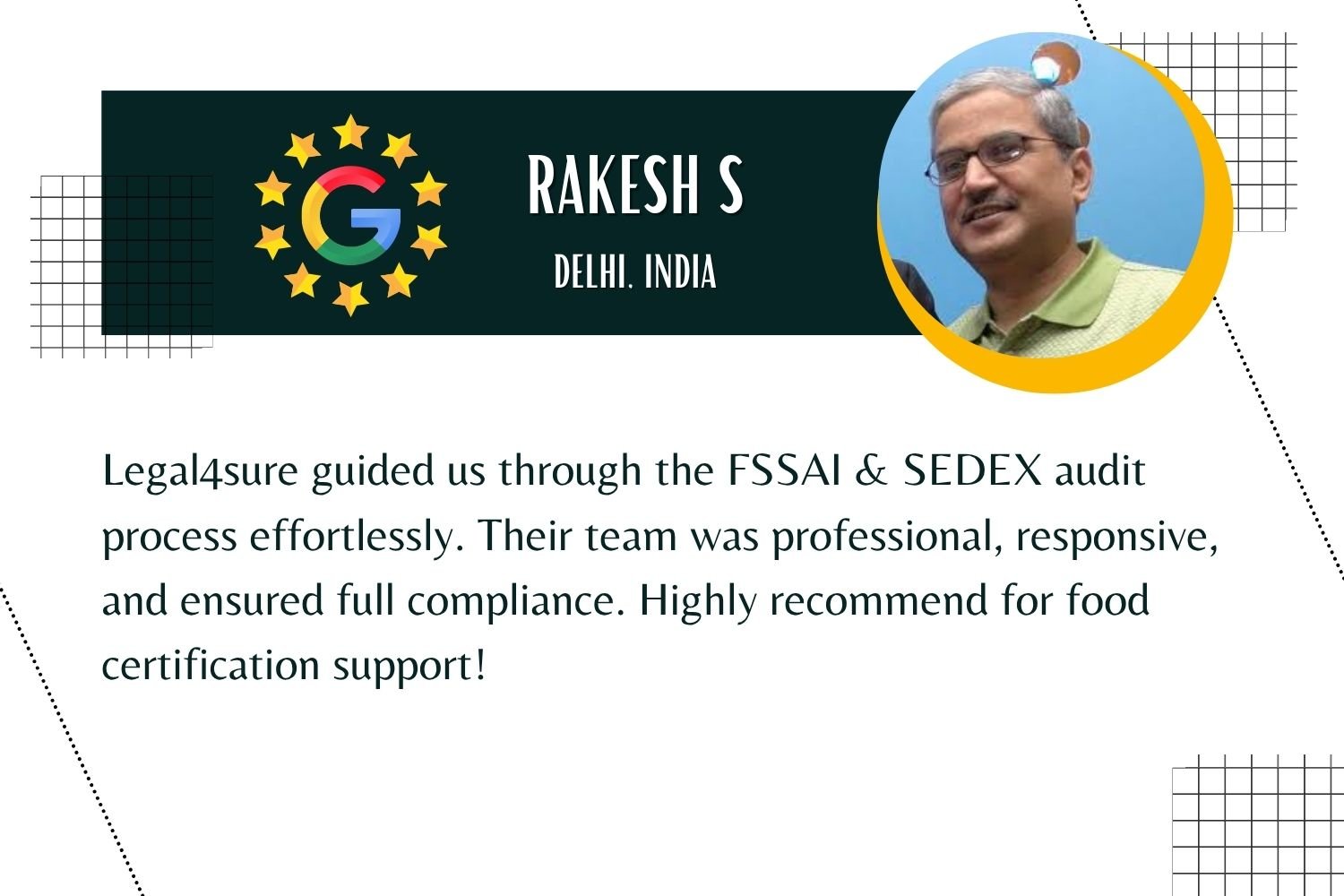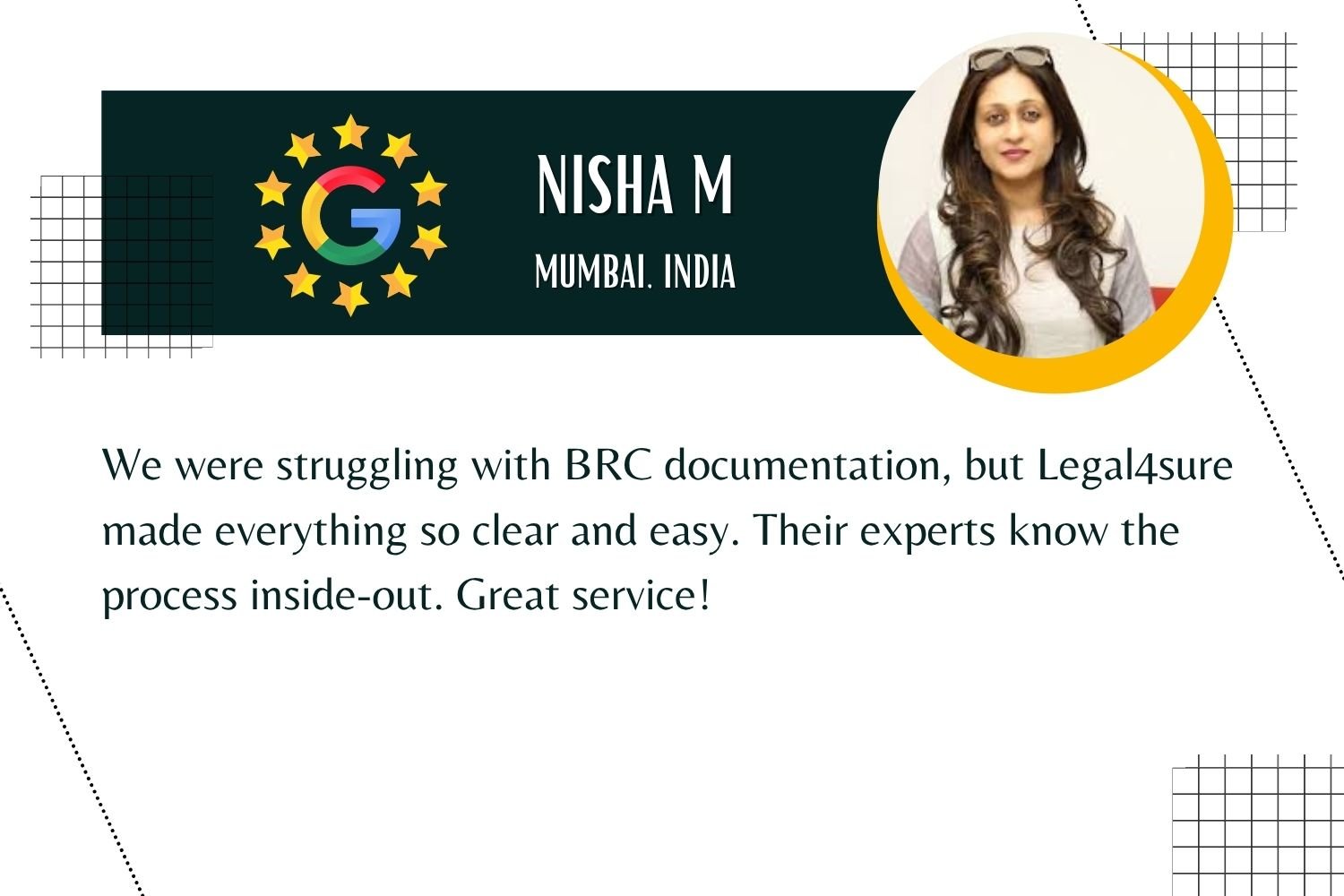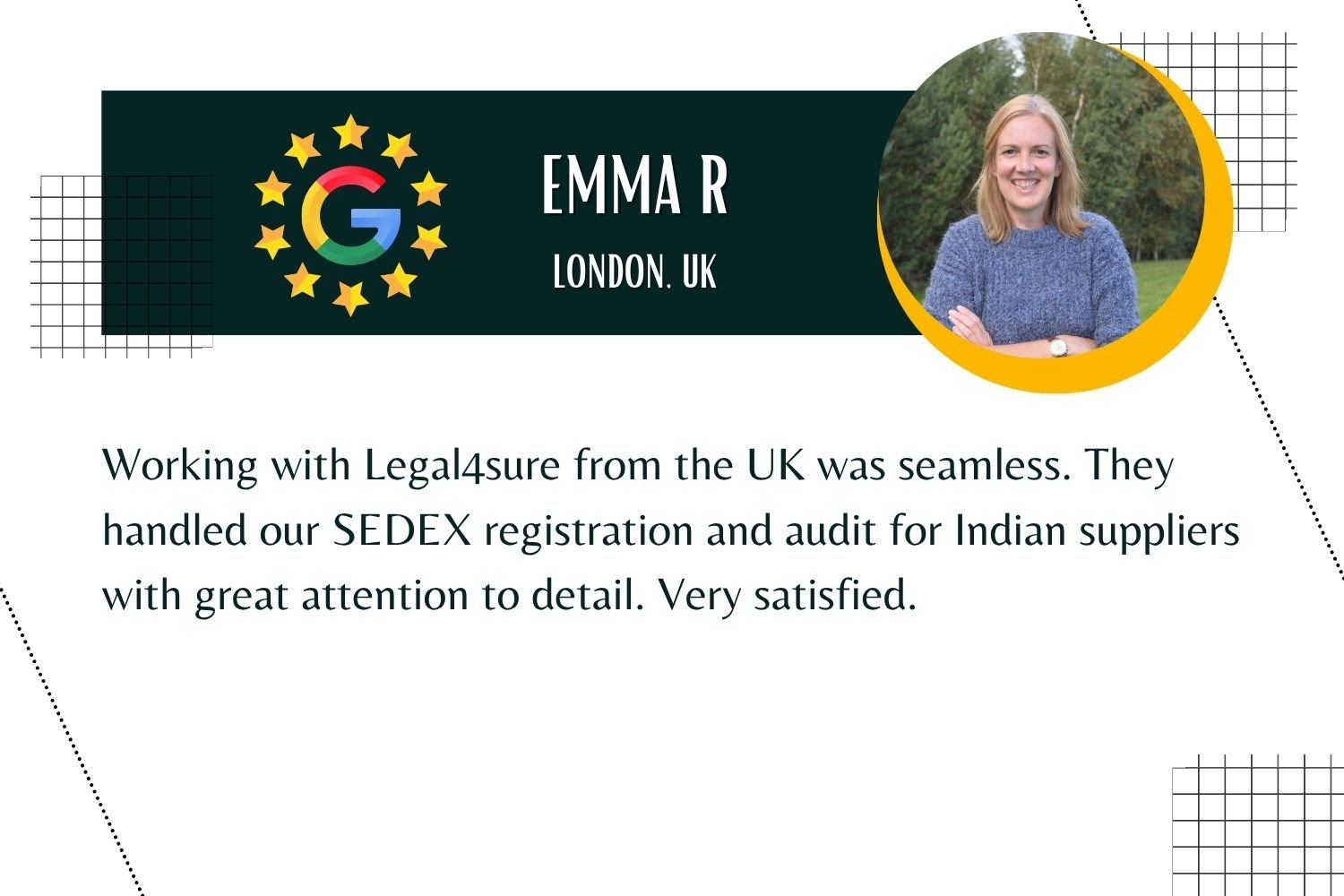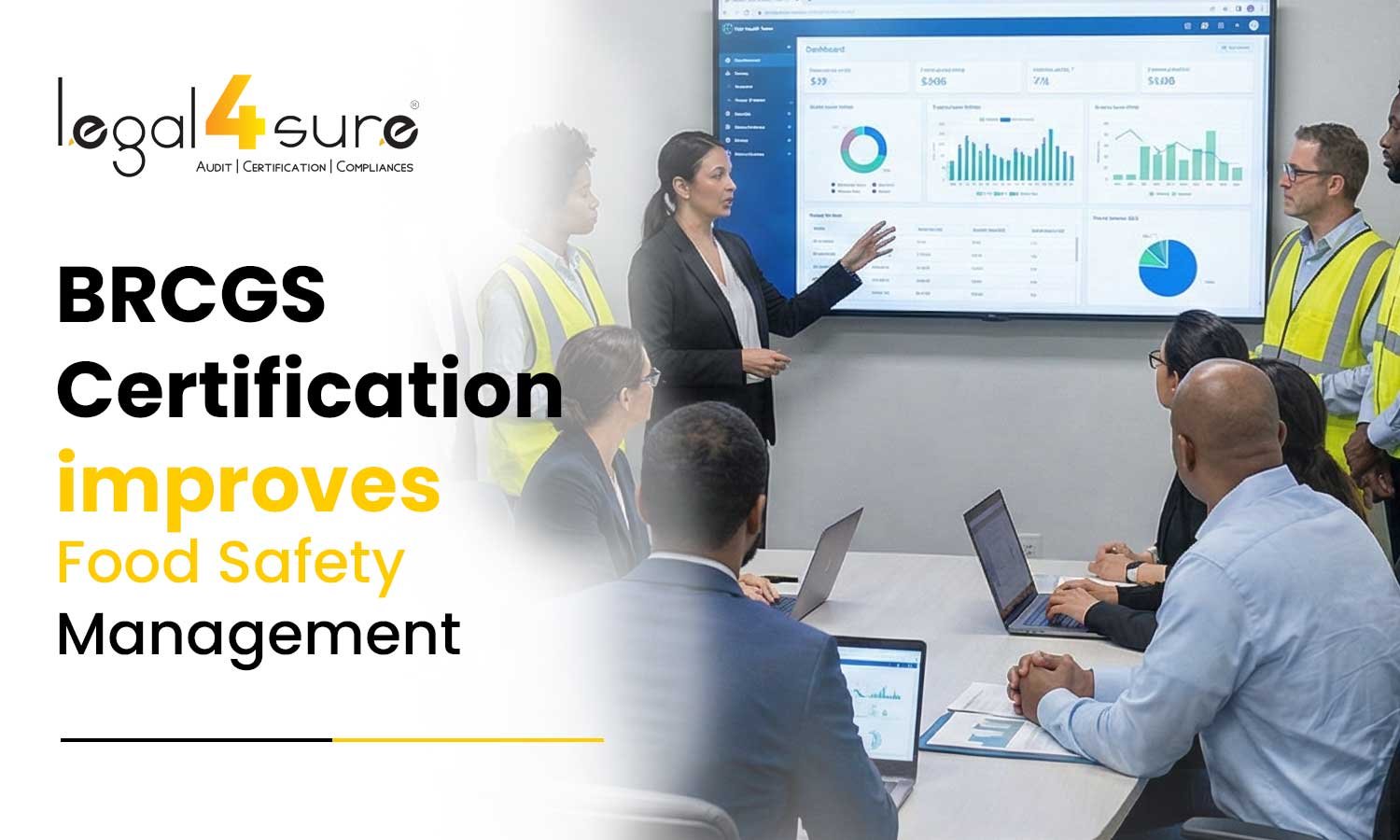As global markets expand, ethical trade is now a key business requirement. SEDEX audits help companies strengthen transparency, meet buyer expectations, and scale internationally. With Sedex 2 Pillar Audit and Sedex 4 Pillar Audit options, choosing the right audit can shape your compliance success. This guide simplifies both and shows why Legal4sure is India’s trusted Sedex consulting partner.
What is a SEDEX Audit?
A Sedex audit, a type of social audit, helps businesses improve their ethical practices and supply chain processes. It is a method of social auditing that includes SEDEX’s 4 pillars, which are labor, health and safety, environment, and business ethics.
By undergoing the Sedex social audit, companies can show that they are dedicated to ethical practices with legal standards. These audits are important for businesses wanting to establish trust with their stakeholders and maintain a competitive edge in global markets.
SEDEX certification offers two pillars of audit structures:
Why Sedex Certification Matters?
SEDEX certification proves that a business follows fair and ethical practices. It builds trust with customers, partners, and suppliers by focusing on safe working conditions, fair practices, and environmental care. This helps businesses grow and stand out in the market.
Note: Check out our blog for complete information about how sedex Certification matters for your business.
Why Choose Sedex Certification For Your Business?
Whether you opt for a Sedex 2 Pillar Audit or a Sedex 4 Pillar Audit, the importance of Sedex certifications are:
- Increases Credibility: Show ethical and sustainable practices.
- Opens Opportunities: Builds trust with clients and suppliers globally.
- Drives Improvement: Helps identify and rectify compliance gaps.
Note: To get the complete details about the importance of Sedex certification, you can visit our blog.
The Two Main Types of Sedex Audits: An Overview
1. SEDEX 2-Pillar Audit
SMETA 2-Pillar audit focuses on two core areas:
-
Labour Standards
The main objective of the Sedex 2 Pillar Audit is to protect the rules and regulations of working, working environment, working hours, remuneration and wages, contracts of employment, employment discrimination, use of child labor, use of forced labor, and other related matters.
-
Health and Safety
The SMETA 2 pillar audit looks after the workplace environment to prevent accidents and ensure worker well-being. Working environment and safety equipment, firefighting equipment, and health care. The auditor will observe the business’s performance.
Key Advantages of SEDEX 2-Pillar:
- Employee safety: Focus on core issues like the quality of civil employees’ lives and their safety.
- Cost Effective: Compared to the 4-Pillar audit, it tends to be less expensive.
- Easy process: The entire process of the SEDEX 2 pillar audit is simplified.
2. SEDEX 4-Pillar Audit
The SMETA 4-Pillar audit builds upon the 2-Pillar Audit and includes two additional areas:
-
Environment
SEDEX 4 pillar audit also analyse the company’s environmental impact, including waste management, energy use, and carbon footprint.
-
Business Ethics
SMETA 4 pillar audit checks practices like preventing corruption, clear management, fair trade practices, and following legal rules.
Key Advantages of SEDEX 4-Pillar:
- Detailed Review: This offers a detailed analysis of all the important ethical and environmental factors.
- Increased Trust: It ensures ethical practices, which may be good for companies wanting to build their image.
- Stand-Out Advantage: Extending the firm’s dedication to various ethical issues helps the firm to be unique in the market.
Get a Free Consultation from our experts and have a smooth SEDEX certification, either SMETA 2 pillar audit or SMETA 4 pillar audit, for your business!
Key Differences Between Sedex 2 Pillar Audit and Sedex 4 Pillar Audit
Feature |
SEDEX 2-Pillar Audit |
SEDEX 4-PillarAudit |
| Scope | Labour Standards, Health & Safety | Labour Standards, Health and Safety, Environment, Business Ethics |
| Purpose | Focuses on main ethical requirements for suppliers. | Provide a more in-depth review of responsible business practices. |
| Compliance requirements | Minimum requirement for many buyers. | Often required by global retailers or famous brands. |
| Audit time period | Takes less time to complete | Requires more audit time due to additional pillars. |
| Cost | 2 pillar audit is cost effective | 4 pillar audit is little more expensive due to its broader scope. |
| Ideal for | Suppliers starting out with SEDEX compliance or working with local buyers | Companies working with international clients or aiming for higher transparency. |
| Recognition | Accepted by many buyers on the SEDEX platform | Preferred by buyers looking for complete ethical audits. |
| Audit Standard Use | Based on the SMETA methodology | Also uses SMETA, with added modules for environment and business ethics |
Choosing the Right Audit: Sedex 2-Pillar and Sedex 4-Pillar
When deciding between the Sedex 2 Pillar audit and the Sedex 4 Pillar audit, consider the following factors:
- Business Size and Scope: Some companies just starting with ethical compliance might find the 2-Pillar audit enough for their needs. However, larger companies or those with complex operations may benefit more from the 4-Pillar audit, as it covers a wider range of areas.
- Customer Requirements: Certain customers or markets may need the Sedex 4-Pillar audit to obtain specific ethical and/or environmental requirements.
- Available Support: Check if your company is ready for the Sedex 4-Pillar audit and whether it can meet the extra time, cost, and other requirements.
Case Studies: Real-World Examples
Case Study 1: A Small Garment Manufacturer (Sedex 2 Pillar Audit)
A small garment manufacturer with 100 workers was struggling to improve its ethical practices and build a stronger reputation with international buyers. With growing awareness about ethical sourcing in the fashion industry, the factory management realized the need to comply with globally recognized social compliance frameworks. They decided to start their journey with the Sedex 2 Pillar Audit, which focuses on Labour Standards and Health & Safety.
Challenges
- Inconsistent documentation of working hours and wages
- Limited knowledge of health and safety protocols
- No formal grievance mechanism for workers
- Gaps in compliance with local labor laws
Solution
We conducted a thorough pre-audit gap assessment to identify non-conformities and risks. The team provided:
Policy & SOP Drafting: Developed customized HR, health & safety, and labor policies compliant with Sedex standards
Worker Training: We conducted on-site training sessions for workers on rights, grievance redressal, and workplace safety
Documentation Support: Helped them to establish proper wage records, attendance logs, and health and safety checklists
Mock Audit: Simulated a Sedex 2-Pillar audit to prepare the management and staff for the final audit.
Outcome
- The garment factory successfully cleared the Sedex 2-Pillar Audit on the first attempt.
- Improved workplace safety measures.
- Ensured all employees received fair wages.
- Sedex 2-Pillar Certification gained trust from international buyers, leading to a 15% increase in orders.
Case Study 2: A Multinational Electronics Company (Sedex 4 Pillar Audit)
A global electronics brand wanted to improve its sustainability efforts. As part of its global CSR strategy, the electronics manufacturer aimed to increase transparency, sustainability, and ethical practices across its Indian operations. The company chose the Sedex 4-Pillar Audit, a globally recognized standard assessing labour standards, health & safety, environment, and business ethics.
Challenge
- Lack of structured environmental documentation and impact assessment
- Gaps in training on ethical business practices
- Insufficient monitoring of labor welfare across subcontracted units
- Limited awareness of Sedex requirements at the local operational level
Solution
Legal4sure stepped in as a full-service compliance partner and offered a modified action plan that included:
- Compliance Gap Analysis: Identified non-conformities across all four Sedex pillars
- SOP Development: Drafted and implemented Standard Operating Procedures (SOPs) for environment management, business ethics, and anti-corruption policies
- Environmental Footprint Monitoring: Guided in setting up systems for tracking emissions, energy use, and waste management
- Training Workshops: Conducted training sessions for staff and management on ethical practices, labor rights, and sustainability
- Supplier Alignment: Advised subcontracted units to align with the client’s Sedex compliance goals
Outcome
- Achieved Sedex 4-Pillar Certification within 3 months
- Improved ESG (Environmental, Social & Governance) ratings across global supplier platforms
- Cut carbon emissions by 20% with energy-saving processes.
- Built lasting partnerships with environmentally conscious clients.
Steps for Acquiring Sedex SMETA Certification
There are various steps through which Legal4sure ensures that the suppliers easily achieve the Sedex certification with complete documentation and verification. These steps are as follows:
- Initial Consultation and Gap Assessment
- Document Fulfillment and Preparation
- Sedex Training for Employees and Management
- Implementation of Sedex Compliance Measures
- Pre-Audit Readiness Check
- Coordinating the Sedex Audit
- Audit Closure and CAPR Management
Note: For more in-depth information about the step-by-step process to achieve SEDEX certification
How Legal4sure Works as a Sedex Consultant?
Legal4sure, the best Sedex Consultant, offers end-to-end consultancy services to help businesses complete Sedex 2 Pillar audit and Sedex 4 Pillar audit. Our turnkey solutions provide a smooth process from factory gap assessments to CAPR closure.
1. Understanding Sedex Audits
- Sedex 2-Pillar Audit: Focuses on worker rights, health, and safety while ensuring the business follows ethical and legal rules.
- Sedex 4-Pillar Audit: It also covers environmental rules and business ethics, making it more detailed.
2. Consultancy Services Provided
Gap Analysis & Pre-Audit Evaluation
- Perform a detailed check to understand the organization’s current compliance status.
- Find out the areas requiring improvement based on Sedex requirements.
Policy & Document Creation
- Create and improve policies for labor, health & safety, the environment, and business ethics.
- Help prepare manuals, SOPs, and documents to meet Sedex standards.
Training and Skill Development
- Teach employees and managers about Sedex audit rules to make sure everyone understands.
- Hold workshops on labor laws, workplace safety, environmental care, and ethical business practices.
Key features of Legal4sure as a Sedex Consultant
- Expertise in both 2 Pillar audit and 4 Pillar audit
- Turnkey Solutions
- Customizable Approach
- Compliance with Global Standards
- Training and Development
Get Your SEDEX Certification Hassle-Free – Call Us Now!
Both the SEDEX Audit 2-Pillar and SEDEX Audit 4-Pillar provide a detailed overview of various ethical practices; however, these two tools are developed to meet different requirements and have different scopes. The Sedex 2-Pillar audit offers a smooth approach to assessing labor and safety measures, and the Sedex 4-Pillar audit includes a broader examination of the company’s environment as well as business conduct.
Benefits of choosing Legal4sure
- Time Efficiency
- Cost-Effective Solutions
- Improved Reputation
- Sustainable Practices
Secure your Sedex Certification from our experienced team of skilled consultants and auditors.
Frequently Asked Questions
Q1. What is the difference between Sedex 2-Pillar and 4-Pillar?
2-Pillar covers labour & health-safety; 4-Pillar adds environment & business ethics.
Q2. What does a Sedex 2-Pillar Audit include?
It checks labour standards and health-and-safety compliance only.
Q3. What does a Sedex 4-Pillar Audit include?
It assesses labour, health-safety, environment, and business ethics in one audit.
Q4. Is SMETA the same as a Sedex audit?
SMETA is the methodology used for Sedex 2-Pillar or 4-Pillar audits.
Q5. What is a 1st, 2nd, and 3rd party audit in Sedex?
1st is self-audit, 2nd is customer audit, 3rd is independent certification audit.
Q6. What is the difference between 2nd-party and 3rd-party audits?
2nd-party is done by a buyer; 3rd-party is done by an accredited external auditor.
Q7. What are the audit levels in Sedex reporting?
They reflect non-compliance severity from minor issues to critical findings.
Q8. What is a 3rd-party audit in Sedex?
A neutral accredited auditor verifies compliance to Sedex (SMETA) standards.













